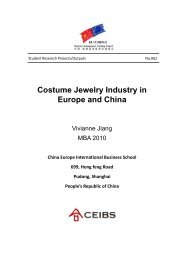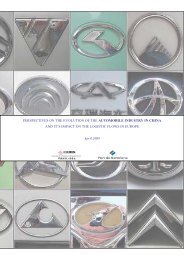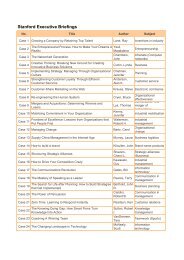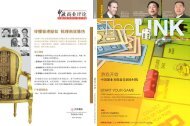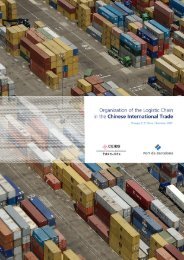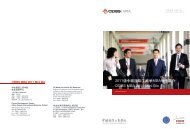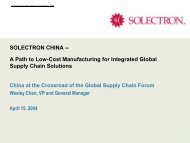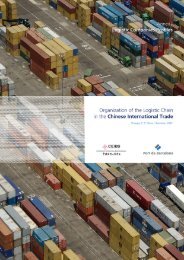Capital Abundance and Developing Country Production Patterns
Capital Abundance and Developing Country Production Patterns
Capital Abundance and Developing Country Production Patterns
You also want an ePaper? Increase the reach of your titles
YUMPU automatically turns print PDFs into web optimized ePapers that Google loves.
statistically significant without controlling for skill to negative <strong>and</strong> statistically insignificant<br />
with skill controlled for, <strong>and</strong> the estimated effect of (K/L) on fabricated metal products (381)<br />
turns from positive <strong>and</strong> statistically significant to positive <strong>and</strong> statistically insignificant. The<br />
estimated effects of the skill variable are statistically significant in 14 of the 28 industries, with<br />
nine of the 14 showing a positive estimated coefficient, suggesting that most manufacturing<br />
industries would see output share to increase with skill.<br />
5.2 Identifying a Subsample with Conditional FPE<br />
Estimating a single Rybczynski equation (9) is valid only if factor prices are conditionally equalized<br />
in the sample. Otherwise countries would produce different sets of goods <strong>and</strong> the estimated<br />
Rybczynski effect would switch signs with respect to different levels of capital abundance.<br />
The literature offers a simple test of conditional FPE. Under conditional FPE, countries<br />
produce the same set of goods. A change in factor supplies will be fully absorbed by outputshare<br />
adjustments, leaving factor prices unchanged.<br />
As a result, production techniques will<br />
be insensitive to factor-supply changes.<br />
This suggests, in the two-factor case, the following<br />
regression equation for testing the conditional FPE hypothesis:<br />
( )<br />
( )<br />
K K<br />
= α it + β t + ν ict . (10)<br />
L ict L ct<br />
In regression equation (10), the dependent variable is industry capital intensity, <strong>and</strong> the independent<br />
variable is country capital abundance. Pooling data across country <strong>and</strong> industry for<br />
any time t, we have industry capital intensity (K/L) ict dependent on industry-specific fixed<br />
effects α it . 8 Under the null hypothesis of conditional FPE, we have β t = 0. The error term ν ict<br />
is assumed to be zero-mean r<strong>and</strong>om technology shocks. If there is no conditional FPE, then<br />
β t ̸= 0. In particular, non-FPE models (e.g. Dornbusch, Fischer, <strong>and</strong> Samuelson, 1980) predict<br />
8 The regression does not include country-specific fixed effects because neutral technology differences across<br />
countries do not affect capital intensity.<br />
13



